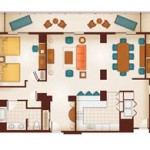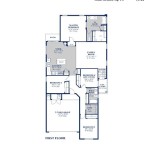How Many Moving Boxes for a 1-Bedroom Apartment?
Determining the appropriate number of moving boxes for a 1-bedroom apartment is a critical step in the overall relocation process. Accurately estimating the required supplies can significantly reduce stress, prevent last-minute scrambles, and ensure a more organized and efficient move. The quantity of boxes needed is not a fixed number; rather, it's influenced by several factors, including the individual's lifestyle, the amount of belongings accumulated over time, and the packing techniques employed. This document aims to provide a comprehensive guide to estimating the necessary number of moving boxes, taking into account various considerations relevant to a 1-bedroom apartment.
The common misconception is that a 1-bedroom apartment inherently requires a minimal number of boxes. While it's smaller than a multi-bedroom house, the accumulated possessions within a single-person dwelling, or even a couple's apartment, can be surprisingly substantial. Clothing, kitchenware, books, electronics, decorative items, and personal documents all contribute to the packing volume. Therefore, a carefully considered estimate is essential for a smooth transition.
One of the initial steps in this process is a thorough inventory of all belongings. This involves systematically reviewing each room and its contents, noting the types and quantities of items to be packed. A detailed inventory allows for a more accurate assessment of the box sizes and quantities needed, preventing both underestimation and overestimation. Overestimation can lead to unnecessary expenses and unused supplies, while underestimation can result in delays and added stress during the already demanding moving process.
The types of moving boxes also play a significant role. Moving boxes are not all created equal; they vary in size, strength, and purpose. Utilizing the appropriate box for specific items is crucial for protecting belongings during transit and optimizing packing efficiency. Standard moving boxes are generally classified into small, medium, large, and extra-large sizes, each suited for different types of items. Specialty boxes, such as wardrobe boxes, dish packs, and mirror/picture boxes, are also available for specific needs.
Furthermore, the packing techniques employed dramatically affect the box count. Proper packing involves strategically utilizing space within each box, minimizing empty air pockets, and securely wrapping fragile items. Inefficient packing can lead to wasted space, increased box count, and a higher risk of damage during transport. Therefore, understanding and implementing effective packing strategies is crucial for optimizing the moving process.
Key Point 1: Estimating Box Quantity Based on Room
A room-by-room assessment provides a structured approach to estimating the number of boxes needed. Each room typically contains different types of items that require specific packing considerations. Breaking down the estimate by room allows for a more refined and accurate calculation.
For the kitchen, expect to use a combination of small and medium boxes for packing dishes, glassware, pots, pans, and small appliances. Dish packs, specifically designed with dividers, are ideal for protecting fragile dishware. Generally, 5-10 small boxes and 3-5 medium boxes might be needed for kitchen items, depending on the extent of kitchenware accumulated. Small appliances should be packed in their original boxes if available; otherwise, use small or medium boxes with ample padding.
In the living room, books, decorative items, electronics, and media collections are common. Books are heavy and should be packed in small boxes to prevent them from becoming too cumbersome to lift. Electronics, such as televisions and gaming consoles, require their original packaging or specialized boxes with adequate padding. Decorative items, such as picture frames and vases, should be individually wrapped and packed in medium boxes with packing peanuts or bubble wrap. Expect to use 5-10 small boxes, 5-8 medium boxes, and potentially 1-2 large boxes for living room items.
The bedroom typically contains clothing, shoes, bedding, and personal items. Clothing can be packed in medium or large boxes, or alternatively, wardrobe boxes can be used to keep hanging clothes wrinkle-free. Shoes should be packed in small or medium boxes, and bedding should be packed in large boxes or vacuum-sealed bags to save space. Personal items, such as jewelry and toiletries, should be packed in small boxes or organizers. Expect to use 5-8 medium boxes, 2-3 large boxes, and potentially 1-2 wardrobe boxes for bedroom items.
The bathroom often requires fewer boxes compared to other rooms. Toiletries, towels, and cleaning supplies are the primary items to be packed. Small and medium boxes are typically sufficient for bathroom items. Expect to use 2-4 small boxes and 1-2 medium boxes for bathroom items.
Any additional spaces, such as closets or storage areas, should be assessed separately. These areas often contain a mix of items, including seasonal clothing, holiday decorations, and miscellaneous items. The number of boxes needed will depend on the quantity and type of items stored in these spaces. Consider using a combination of small, medium, and large boxes to accommodate the variety of items.
Key Point 2: The Role of Box Sizes and Types
Selecting the appropriate box sizes and types is crucial for efficient packing and protecting your belongings. Different items require different levels of protection and space optimization. Understanding the characteristics of each box type ensures that items are packed securely and the overall box count is minimized.
Small boxes (typically around 16x12x12 inches) are ideal for heavy items such as books, canned goods, and small appliances. Packing heavy items in small boxes prevents them from becoming too difficult to lift and reduces the risk of the box breaking during transport. These boxes are also useful for organizing and packing small, miscellaneous items.
Medium boxes (typically around 18x18x16 inches) are the most versatile and commonly used box size. They are suitable for a wide range of items, including clothing, kitchenware, and electronic accessories. Medium boxes strike a balance between size and weight capacity, making them easy to handle while still accommodating a significant amount of belongings.
Large boxes (typically around 18x18x24 inches) are best suited for lightweight and bulky items such as bedding, pillows, and large lampshades. Avoid packing heavy items in large boxes, as they can become difficult to lift and increase the risk of damage. Large boxes are also useful for packing oddly shaped items that don't fit well in smaller boxes.
Extra-large boxes (typically around 24x18x24 inches) are generally not recommended for moving due to their size and potential for becoming excessively heavy. While they may seem appealing for packing a large quantity of lightweight items, they can be difficult to maneuver and increase the risk of strain or injury. In most cases, using multiple smaller boxes is a more practical and safer option.
Specialty boxes, such as wardrobe boxes, dish packs, and mirror/picture boxes, are designed for specific purposes. Wardrobe boxes feature a built-in hanging bar, allowing you to transport clothing without wrinkling. Dish packs have dividers to protect fragile dishware from breaking. Mirror/picture boxes are designed to protect mirrors, artwork, and other flat, fragile items during transport. Utilizing specialty boxes can significantly improve the safety and efficiency of packing these types of items.
Key Point 3: Optimizing Packing Techniques to Reduce Box Count
Employing effective packing techniques can significantly reduce the overall number of boxes required. Proper packing involves maximizing the use of space within each box, minimizing air pockets, and securely wrapping fragile items. By optimizing packing techniques, you can reduce the volume of belongings and minimize the risk of damage during transport.
One of the fundamental principles of efficient packing is to utilize all available space within each box. Avoid leaving empty air pockets, as these can cause items to shift during transport and increase the risk of damage. Fill empty spaces with packing peanuts, bubble wrap, or crumpled paper to provide cushioning and support.
When packing clothing, consider rolling items instead of folding them. Rolling clothing saves space and prevents wrinkles. Use vacuum-sealed bags to compress bulky items such as bedding and pillows. This will significantly reduce their volume and allow you to fit more items into each box.
Fragile items, such as dishware and glassware, require extra care and attention during packing. Individually wrap each item in bubble wrap or packing paper to provide cushioning and protection. Use dish packs with dividers to keep dishware separate and prevent them from clanging together. Fill empty spaces with packing peanuts to prevent items from shifting during transport.
When packing electronics, use the original packaging whenever possible. The original packaging is designed to protect the specific item during transport. If the original packaging is not available, use a box that is slightly larger than the item and fill empty spaces with bubble wrap or packing peanuts. Securely tape the box and label it as "fragile."
Labeling each box clearly and accurately is essential for organized unpacking. Use a permanent marker to write a brief description of the contents on each side of the box. Include the room where the box belongs, such as "Kitchen" or "Bedroom." This will make it easier to locate specific items when unpacking and will help the movers place the boxes in the correct rooms.
Disassembling furniture, when possible, can save a significant amount of space. Remove legs from tables and chairs, and disassemble bed frames and other large items. Keep all hardware together in a labeled bag and attach it to the corresponding furniture piece. Wrap furniture parts in blankets or bubble wrap to protect them from scratches and dents.
By carefully considering these factors and implementing the strategies described, individuals can more accurately estimate the number of moving boxes required for a 1-bedroom apartment, leading to a more organized and efficient relocation experience. Remember that it's always better to overestimate slightly than to underestimate, as additional boxes can always be repurposed or returned, while running out of boxes during the move can cause significant delays and stress.

Moving Tip How Many Boxes To Move A 1 Bedroom Apartment

How Many Moving Boxes Will You Need Apartmentguide Com

How Many Boxes Are Needed To Move A One Bedroom Apartment

How To Find Cheap Moving Boxes Like A Scrappy Hunter Gatherer

Apartment Moving Guide Studio Help

How Many Moving Boxes Do You Really Need A Quick Guide Super Cheap

Moving Checklist A Tested Step By Guide For Smooth Move

How Many Boxes Do I Need To Move No More Blind Guessing

How Many Boxes Do I Need To Move

First Apartment Move In Checklist Essentials








